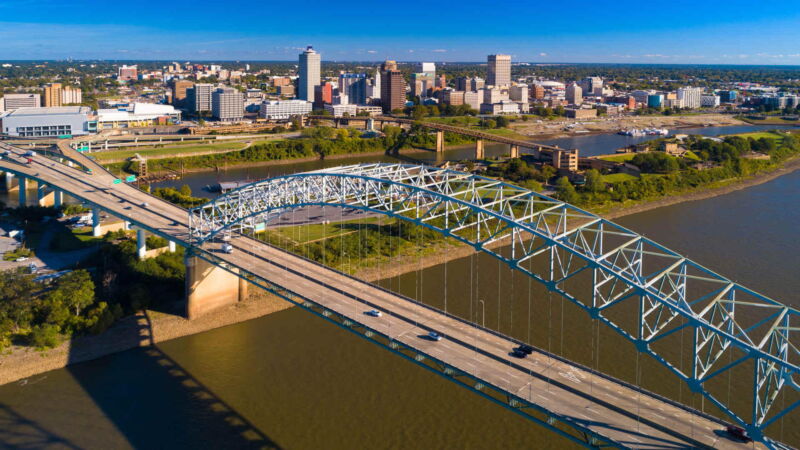The struggle to understand why earthquakes happen in America’s heartland

Enlarge / Top: A view of the downtown Memphis skyline, including the Hernando De Soto bridge which has been retrofitted for earthquakes. Memphis is located around 40 miles from a fault line in the quake-prone New Madrid system. (credit: iStock via Getty Images)
The first earthquake struck while the town was still asleep. Around 2:00 am on Dec. 16, 1811, New Madrid—a small frontier settlement of 400 people on land now located in Missouri—was jolted awake. Panicked townsfolk fled their homes as buildings collapsed and the smell of sulfur filled the air.
The episode didn’t last long. But the worst was yet to come. Nearly two months later, after dozens of aftershocks and another massive quake, the fault line running directly under the town ruptured. Thirty-one-year-old resident Eliza Bryan watched in horror as the Mississippi River receded and swept away boats full of people. In nearby fields, geysers of sand erupted, and a rumble filled the air.
In the end, the town had dropped at least 15 feet. Bryan and others spent a year and a half living in makeshift camps while they waited for the aftershocks to end. Four years later, the shocks had become less common. At last, the rattled townspeople began “to hope that ere long they will entirely cease,” Bryan wrote in a letter.




